This 15-hour course, which can be completed over three weeks, provides an overview of employee ownership, including its benefits for employees and businesses, utility in succession planning, and effect on the economy. Enrollees can track their understanding through quizzes and a final assessment. A shareable certificate is provided upon completion.
This free educational program is intended to help minority and female business owners understand the role transitioning to employer ownership may play in succession planning. Course modules cover employee stock ownership plans (ESOPs) and worker cooperatives. Registrants will gain a broad understanding of employee ownership, including transition financing and facilitating an ownership culture that maximizes employees’ capabilities.
A directory of key organizations and indidviduals working on employee ownership. It includes governmental and nongovernmental organizations, including at the state, national, and international level.
Workforce intermediaries are uniquely positioned to help workers and businesses achieve mutually beneficial outcomes. Employers desire a workforce development approach that will address their most critical pain points, whereas workers seek opportunities to advance their economic security. In recent years, a wave of organizations has worked to take a “both-and” approach. These pioneers have recognized that job retention and recruitment are often linked to poor job quality, and that worker voice and input are critical to their ability to meet the demands of a dual-customer approach.
Members of the U.S. Chamber of Commerce Foundation’s Talent Pipeline Management (TPM) network are among those embracing this approach and leading on job quality and worker voice. The TPM Academy equips employers and their education and workforce development partners with strategies and tools to co-design talent supply chains that connect learners and workers to jobs and career advancement opportunities. And recently, the Foundation and the Aspen Institute Economic Opportunities Program developed a new curriculum focused on job quality to embed within the TPM Academy for businesses and business-facing organizations. The new course will be available this summer.
In this webinar, which took place on July 24, 2024, we hear from two members of the TPM network about how they have tapped into worker voice and worked with employers to drive job quality improvements.
This resource includes an at-a-glance overview of commuter benefits targeted at employers. A more comprehensive guide is available as a paid resource. Employers and the practitioners supporting them may find these resources useful for launching or enhancing a commuter benefits program.
This simple, user-friendly calculator serves as a tool to measure the income needed by a family to maintain an adequate standard of living in a specific community. It can calculate costs based on all counties and metro areas in the US and for 10 family types (one or two adults with zero to four children). Family budgets are calculated using seven components: housing, food, transportation, childcare, healthcare, taxes, and “other necessities.”
This calculator is a tool for estimating the living wage by US metro area, county, state, region, or at the national level. The living wage is defined as the wage needed to cover basic family expenses including housing, food, childcare, transportation, health, and other necessities, plus relevant taxes. The calculator estimates the living wage needed to support families of 12 different compositions (one to two adults with up to three children). Practitioners across fields can use this tool to benchmark compensation in local communities or firms against a wage rate that allows residents to meet minimum standards of living. Because the Massachusetts Institute of Technology is a nonpartisan research institution, practitioners report that this tool has credibility with a range of audiences including businesses.
This tool is designed to guide workforce practitioners through the development and growth of industry partnerships that bring together employers, service providers, and workers. While industry partnerships may form to address talent needs, as the National Fund notes, these partnerships can become an important avenue for addressing job quality and workplace inequities over time. The toolkit includes an assessment to help strengthen partnerships as well as guidance and resources related to five areas: employer and industry engagement, stakeholder engagement, data-informed strategy and continuous learning, operational capacity, and racial equity and inclusion. Workforce and economic development professionals may find the toolkit useful for embedding job quality in industry partnership approaches.
This assessment is a tool to help employers (primarily >150 employees) benchmark their talent management strategies against those other employers are undertaking and to determine where to focus practice change efforts. The topics covered in the survey include recruiting, hiring, retention, advancement, and more. A separate resource section also provides a variety of business-facing tools. Practitioners who work with businesses could direct them to this tool and even walk them through it.
This PDF provides a helpful model for assessing business practices. Employers are asked questions about the quality of their jobs through factors such as diversity, benefits (e.g., paid leave), health support, and flexible scheduling. Although some questions are specific to New Mexico’s policies, this application may be used as a model for organizations interested in assessing job quality for current and potential employer partners. This tool could also be used internally for employers who would like to assess their own practices.
